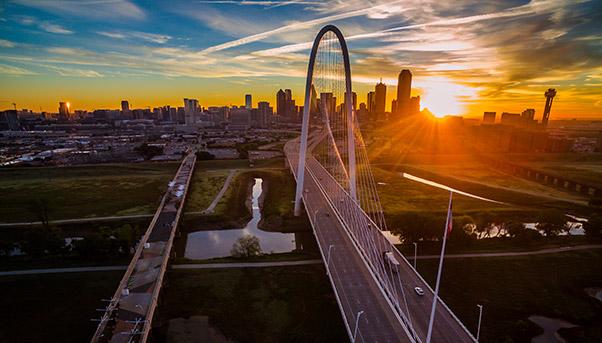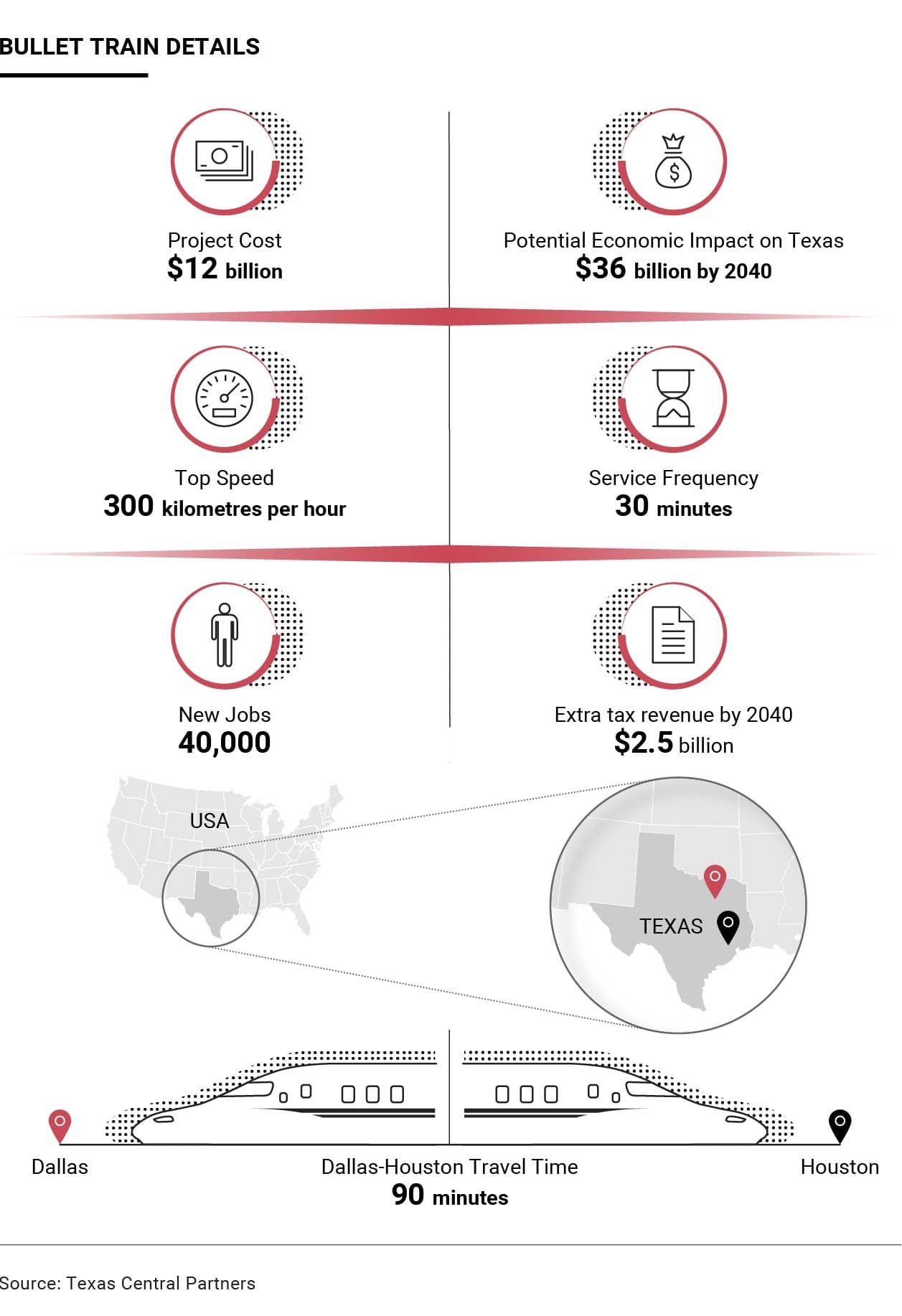
A group of entrepreneurial investors are striving to get public support and regulatory approval for the construction of a high-speed train in Texas, a $12-billion project that would be the first of its kind in the United States.
«This is an unprecedented multi-billion-dollar investment in the state’s future», declares the group, Texas Central, on its website.
As the biggest infrastructure project in the state’s history, the so-called Texas Bullet Train would travel between Houston and Dallas/Fort Worth, dramatically reducing commuting times between two of the country’s fastest growing cities. Racing at speeds of more than 300 kilometres per hour, the train would complete the journey in less than 90 minutes. By comparison, car travel can take up to five hours on the Interstate 45, which the Houston Chronicle newspaper describes as the second deadliest highway in the country. Traffic is expected to get so bad that travel times could exceed six hours in the next 20 years.
«(The train) will provide a faster, safer alternative to auto travel», Texas Central says, adding that 14 million people already commute between the two cities every year – showing demand for a service of this kind is strong.
Boost to the Local Economy
By getting people to choose the train over the car, this would not only reduce congestion along the highway but also help fight air pollution.
Another benefit highlighted by the Bullet Train is the boost that the construction of the railway, its three stations and related infrastructure would give to the local economy. Citing independent estimates, the project would have a cumulative impact of $36 billion between 2015 and 2040. During the approximately four years that it would take to build the train service, an average of 10,000 jobs would be created every year. Then there would be the thousands of jobs that would be created indirectly as a result.

«(It will have) a 25-year economic impact equal to 180 Super Bowls», reads an open letter posted on the website by Drayton McLane Jr., Chairman of Texas Central’s board of directors. What is more, some $2.5 billion in extra tax revenue would be collected by state and local government by 2040, he says. The Super Bowl is the final game of the season for the National Football League (NFL), one of the biggest and most lucrative sporting events.
«The overall economic impact is incredible and it’s real», says the group’s president, Tim Keith, also on the website. «The project will directly benefit each of the counties along the route and provide additional resources to the state and local communities to help fund transportation or any other needs and ambitions they choose to support».
Private Financing and Japanese Technology
One aspect of the project that Texas Central emphasizes is the fact that it would forego state and federal grants.
Texas Central has Fluor Corporation and The Lane Construction Corporation as its preferred design and build partners. And it will deploy Japanese technology in the form of the N700-I Bullet system purchased from Central Japan Railway Company, the operator of the famous Shinkansen train that shuttles between Tokyo and Osaka.
The Texas Bullet Train service would consist of a train with eight carriages, able to carry about 400 passengers. One innovative feature is the system’s use of the energy produced by the train while in motion. By converting it into electricity, it can bring the train to a stop.
The train is expected to serve five million travellers per year within the first years of operation.
As it has been going through the regulatory process to obtain the permissions required to execute the project including public hearings, the train has been earning a growing number of supporters.
«The city is obviously more than supportive. We’re completely behind this project», Lee Kleinman, a Dallas City Council member, told The Dallas Morning News newspaper in January. «We’re excited about the economy for both Dallas and Houston and the congestion it’s going to relieve».

